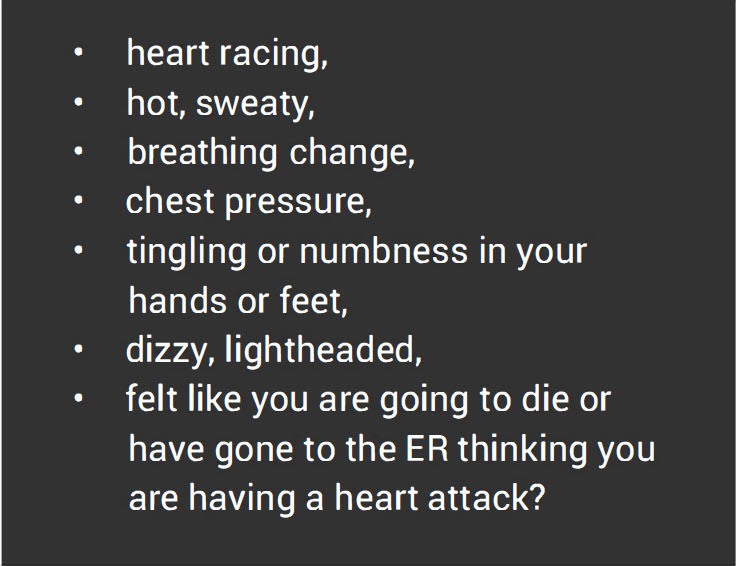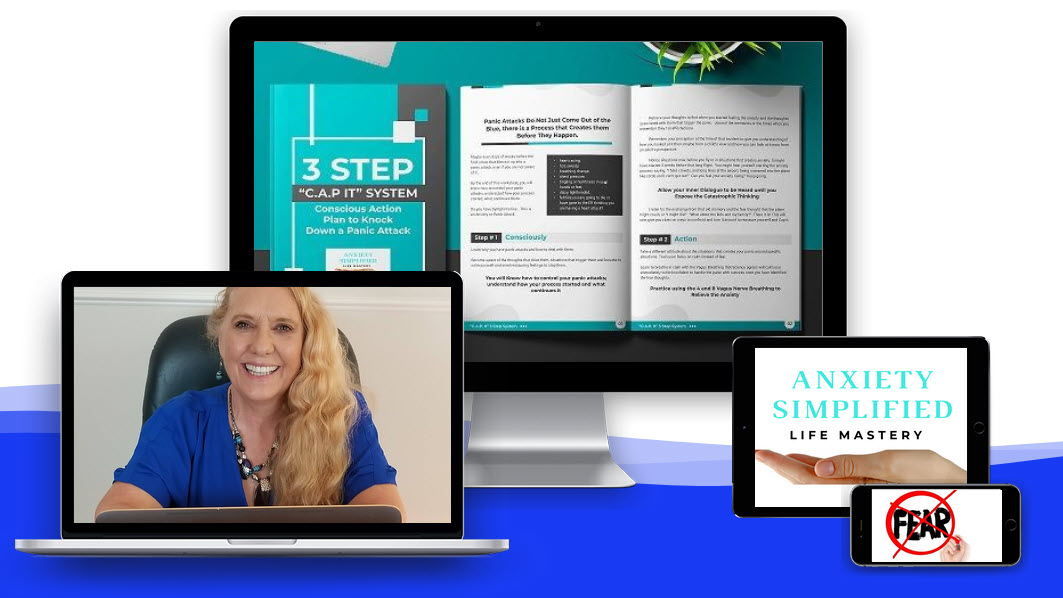Panic attacks, or short bouts of extreme fear or terror, can be terrible at any time, but they can be especially troubling when you get a panic attack while driving. While panic attacks may be more common if you have an anxiety or panic condition, they can occur anytime - even if you aren't aware.
But there is still hope. Panic attacks can be treated, and there are things you can do to aid in the relief of a panic attack that occurs while you're driving.

1
How Can You Be Sure if You're Under a Panic Attack?
Panic attacks and panic disorder are both part of the larger spectrum of anxiety disorders, but they are not the same thing.
Panic attacks are frequently characterized by mostly bodily symptoms that can entirely disrupt what you're doing for a brief amount of time. They may cause you to feel alienated or separated from yourself or your surroundings.
Panic disorder is when you have reoccurring panic attacks.
2
What Triggers Panic Attacks While Driving?
You can suffer from a panic attack while driving for a variety of reasons.
Certain factors, however, can increase the likelihood of panic episodes, such as:
- A known family history of similar experiences
- Substantial life changes or stress
- A recent trauma or accident, even if it is not driving-related
If you have panic attacks on occasion, you may be concerned about having another one, especially if you are in a position or location where you might endanger yourself or others.
Panic attacks are frequently caused by a fear of losing full control, or feeling overwhelmed, yet possessing this anxiety may actually increase your chances of experiencing one. Feeling nervous, panicked, or agitated while driving for any reason does not necessarily imply you will panic, but these variables may increase your chances of having an episode.
Panic attacks can also happen as a result of a fearful thought about an incident the MIGHT happen as you are driving or when you are exposed to a trigger, such as an event, sight, sound, smell, or feeling that reminds you of your fear or a past panic attack.
You are more prone to suffer a panic attack if you have a phobia. For example, coming face to face with something you're terrified of could set off a panic attack. This could be due to driving anxiety or a phobia of driving, or it could be due to items you may face when driving, such as tunnels, bridges, huge bodies of water, or even bees and other insects that you fear may get into your car.

3
How Is a Panic Attack Diagnosed?
A mental health expert, such as a therapist, psychologist, or psychiatrist, will ask you to describe what happened, when it happened, what you were doing, and where you were when it happened. There are 14 possible symptoms in a panic attack and you must have at least 4 of the symptoms to be classified at a panic attack.
The following are some symptoms of a panic attack:
- trembling,
- racing heart,
- sweating,
- tingling,
- dizziness,
- fainting,
- rapid breathing,
- chills,
- hot flashes,
- chest pressure or pains,
- nauseousness,
- fear of dying from these symptoms,
- feeling uncontrollable, and feeling of an impending disaster.
To detect panic attacks, mental health specialists compare the symptoms you describe to those listed in the Diagnostic & Statistical Manual of Mental Disorders, 5th Edition (DSM-5).
A panic attack is not a mental health problem in and of itself, but it may occur as part of another condition, such as anxiety, social anxiety, post-traumatic stress disorder (PTSD), panic disorder, or depression, among others. It is also thought to be a qualifier for various mental health illnesses, such as depression, PTSD, and substance abuse disorder.
You may have panic disorder if you experience frequent panic attacks, worry about having more, and adjust your everyday life or behavior to prevent having them. The DSM-5 classifies this disease as an anxiety disorder.
Panic disorder is fairly treatable, but you'll need to contact a mental health expert for an appropriate diagnosis and treatment recommendations.
4
Coping Strategies for Panic Attacks
Panic attacks can produce anxiety as well as physical symptoms. It's not rare to experience feelings of impending death, as well as other unpleasant experiences. When you're lightheaded, dizzy, or can't breathe properly, it might be difficult to remain calm. You may need to pull over and exit your vehicle straight away.
If you feel safe in a certain location, getting out of your vehicle may make you feel less panic, but it won't help in addressing the cause of your anxiety. But what if it's not safe or possible to stop and get out of your car? Here are a few pointers to help you deal with a panic attack while driving:
Make use of safe distractions.
Listening to podcasts, music, or the radio while behind the wheel can help you focus on something other than stressful things. If you suffer from anxiety or another mental illness, music can help you cope with upsetting thoughts and emotions and prevent panic attacks. Listen to Joanne’s Podcast Anxiety Simplified for skills and tools on iTunes and all other platforms.
Try creating a playlist of “chill” music or your favorite relaxing songs. A humorous or lighthearted podcast or radio show can also assist in diverting your attention away from thoughts that may cause anxiety or stress.
Use your senses.
Take spicy or sour candies, gum, or a cold drink with you when going for a drive. If you start to feel panicked, put a candy in your mouth or sip your cold drink.
The cold beverage or the biting flavor of the candy can assist you in regaining your senses and focusing on something other than your panic. Chewing a gum can likewise be beneficial.
Refresh yourself.
Turn on the air conditioning or pull down your windows if you start to feel lightheaded, dizzy, or sweaty. The cold air brushing on your hands and face can help relieve symptoms and make you feel more relaxed.
Breathe.
Panic attacks can trigger shortness of breath and the sensation of choking. This can be frightening, so take calm, deep breaths. Concentrate on breathing inhaling and exhaling rather than the threat of choking. Thinking about being unable to breathe can make catching your breath more difficult.
Learn the 4 and 8 Breathing technique that can calm you in minutes. You can count 1, 2, 3, 4 as you breath in through your nose and count 1, 2, 3, 4, 5, 6, 7, 8, out your mouth slowly, this has been proven to stimulate the Vagus nerve to calm you immediately with a calm chemical flowing through your body. Do 10 rounds of about 2 minutes. Continue to Practice 2 to 3 times per day while you are not driving and you will have an on demand way to calm yourself and it can accumulate the calm throughout your day.
Concentrate on your symptoms, not the ideas that are causing them.
Take deep, low, breaths, shake your quivering hands off, and switch on the AC if you're hot or sweaty — or the heater if you're cold. Tell yourself that theses aren't serious and will pass in a matter of minutes. Try not to worry about your apprehension. Giving yourself something to focus on, such as a distant structure or a sign to find, can help.
Continue to drive if it’s safe to do so.
Pushing through your fear that comes with a panic episode can assist you in overcoming it. Treating panic frequently entails accepting that, no matter how frightening they appear, panic attacks do not harm you.
Driving through a panic attack can make you realize it doesn't have control over you and reassure you that you can manage it without any negative consequences. This can make you feel better prepared to deal with a panic attack in case you have another.
Final Word
Anxiety while driving, can be dangerous. Knowing that your worst-case scenario thinking that something bad might happen is the start of the progress of anxiety to a panic attack, maybe even starting before you get in the car. Learning technique to manage this anxiety to drive is critical and doesn’t have to be as hard as you may think. Learning to control your breathing can be one of the fastest ways to help with anxiety reduction.
Stop Panic Attacks Now
This course is video based to be able to re listen to over and over again with a workbook to follow again or reuse you conquer one trigger you can see your progress to feel you can do this!
Click this link to take your first steps out of having panic attacks forever. Take a >Video 3 Step Course on how to Crush Panic Attacks with Joanne Williams, LCSW< Learn from a 30-year mental health professional. In this course, the 2nd step teaches the Vagus breathing, to get that immediate calming.
However, if your panic episodes become regular or interfere with your life, it is a good idea to seek professional care. You can then concentrate on learning how to calm down after a panic attack, better managing them, and coping with the associated worries.
Contact Joanne Williams for a free 10-minute consultation on you best next step at 760-485-6784.
Disclaimer: This article is by no means a replacement for medical attention

